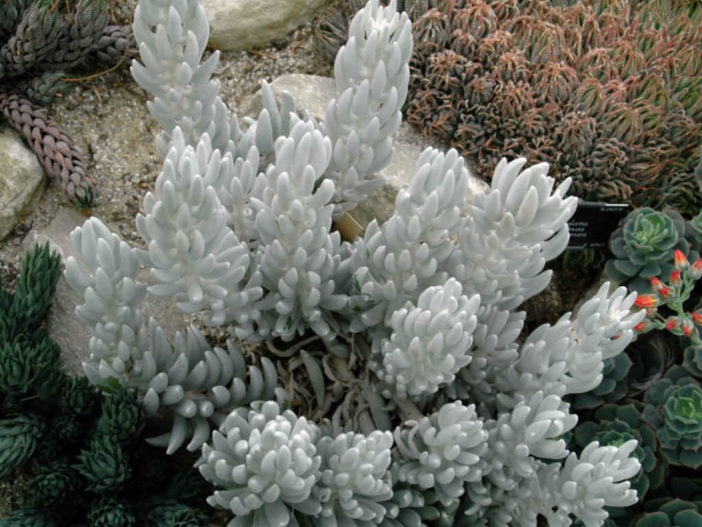Scientific Name
Senecio haworthii (Sweet) Sch.Bip.
Common Name(s)
Cocoon Plant, Matted Caputia, Woolly Senecio
Synonym(s)
Kleinia tomentosa, Senecio vestitus
Scientific Classification
Family: Asteraceae
Subfamily: Asteroideae
Tribe: Senecioneae
Genus: Caputia
Description
Caputia tomentosa, formerly known as Senecio haworthii, is a compact succulent shrublet with woody stems and thick fleshy leaves covered with fine white hairs. It grows up to 10 inches (25 cm) tall. The leaves are upright, cylindrical, and taper elegantly towards their pointed tips.
The plant produces solitary, stalked, bright yellow flowerheads comprising disc florets only, no rays. They are up to 0.8 inches (2 cm) in diameter and appear in summer.

Hardiness
USDA hardiness zones 9b to 11b: from 25 °F (−3.9 °C) to 50 °F (+10 °C).
How to Grow and Care
Established Senecios are extremely drought tolerant. They need some water during the summer but do not leave the soil wet for prolonged periods. Allow the soil to dry out between waterings in winter when they are somewhat dormant. Since they are growing in sandy soil, nutrients need to be replenished. Fertilize annually, but lightly. Too much fertilizer will cause a lot of leggy growth.
Taller varieties can get floppy. In early spring, you can prune them back to where the stem is firm. You can even root the cuttings.
Plants can be divided or repotted in early spring. If you are growing them in containers, they enjoy spending the summer outdoors. Wait until there is no danger of frost and move them back indoors in the fall.
Senecio can be grown from either seed or cuttings. Seeds prefer warm temperatures and constant moisture to germinate. Cuttings are easier and faster. Cut during the growing season, from early spring to fall. Root in sandy soil, in containers.
Learn more at How to Grow and Care for Senecio.
Links
- Back to genus Caputia
- Succupedia: Browse succulents by Scientific Name, Common Name, Genus, Family, USDA Hardiness Zone, Origin, or cacti by Genus
Photo Gallery
Click on a photo to see a larger version.



